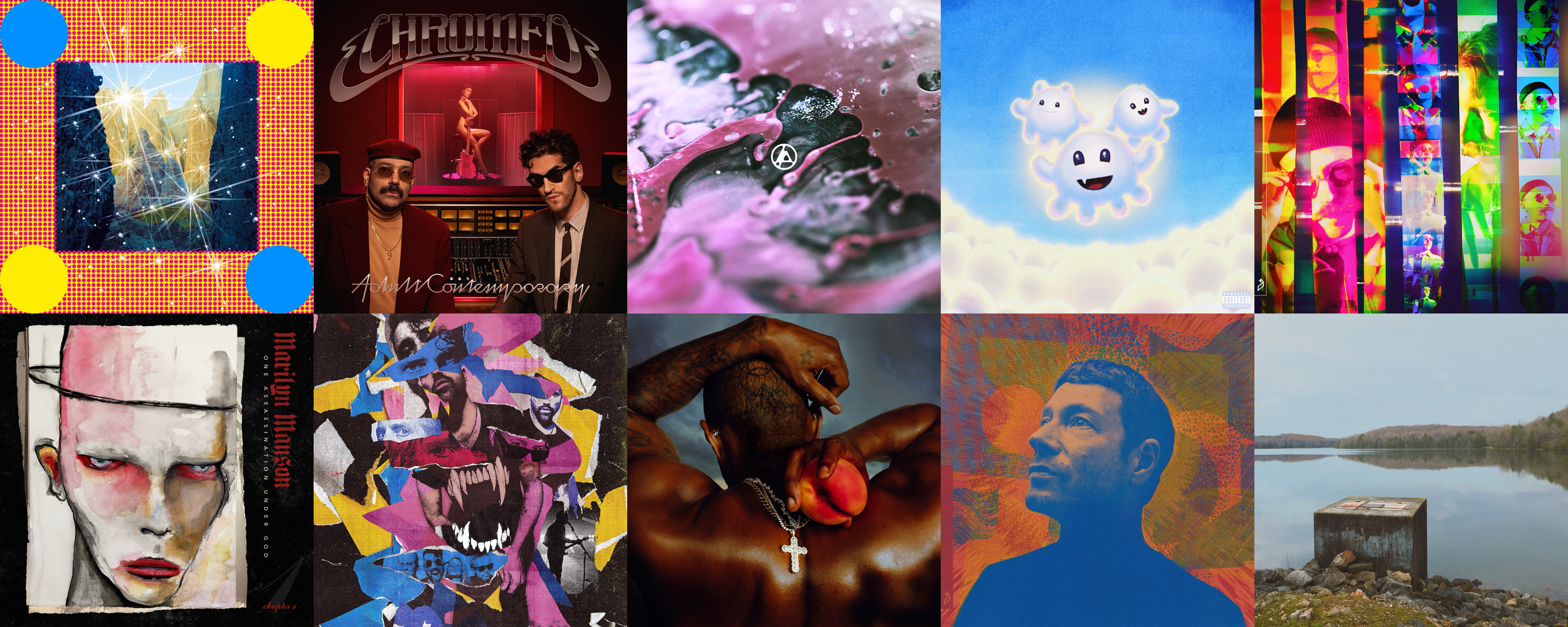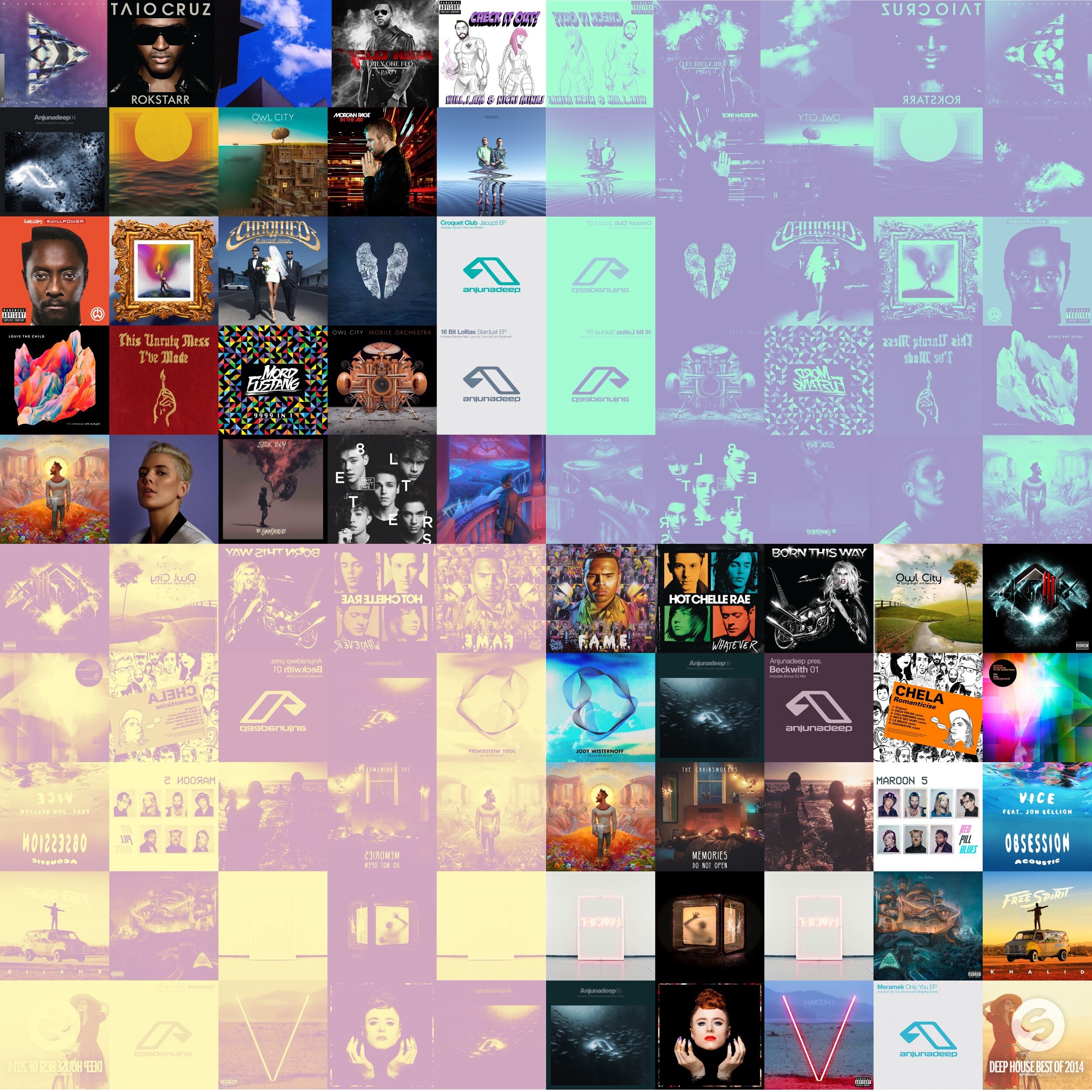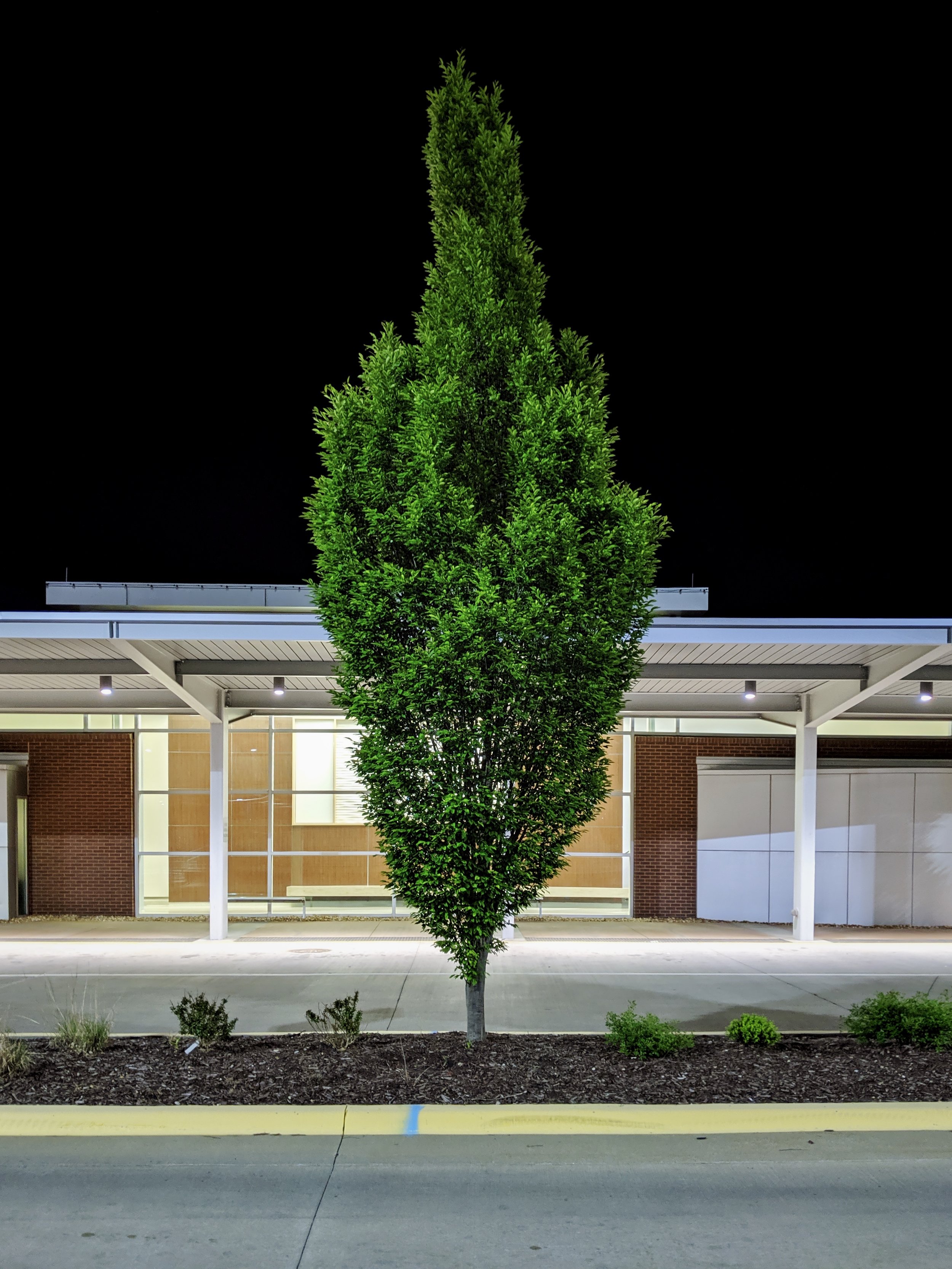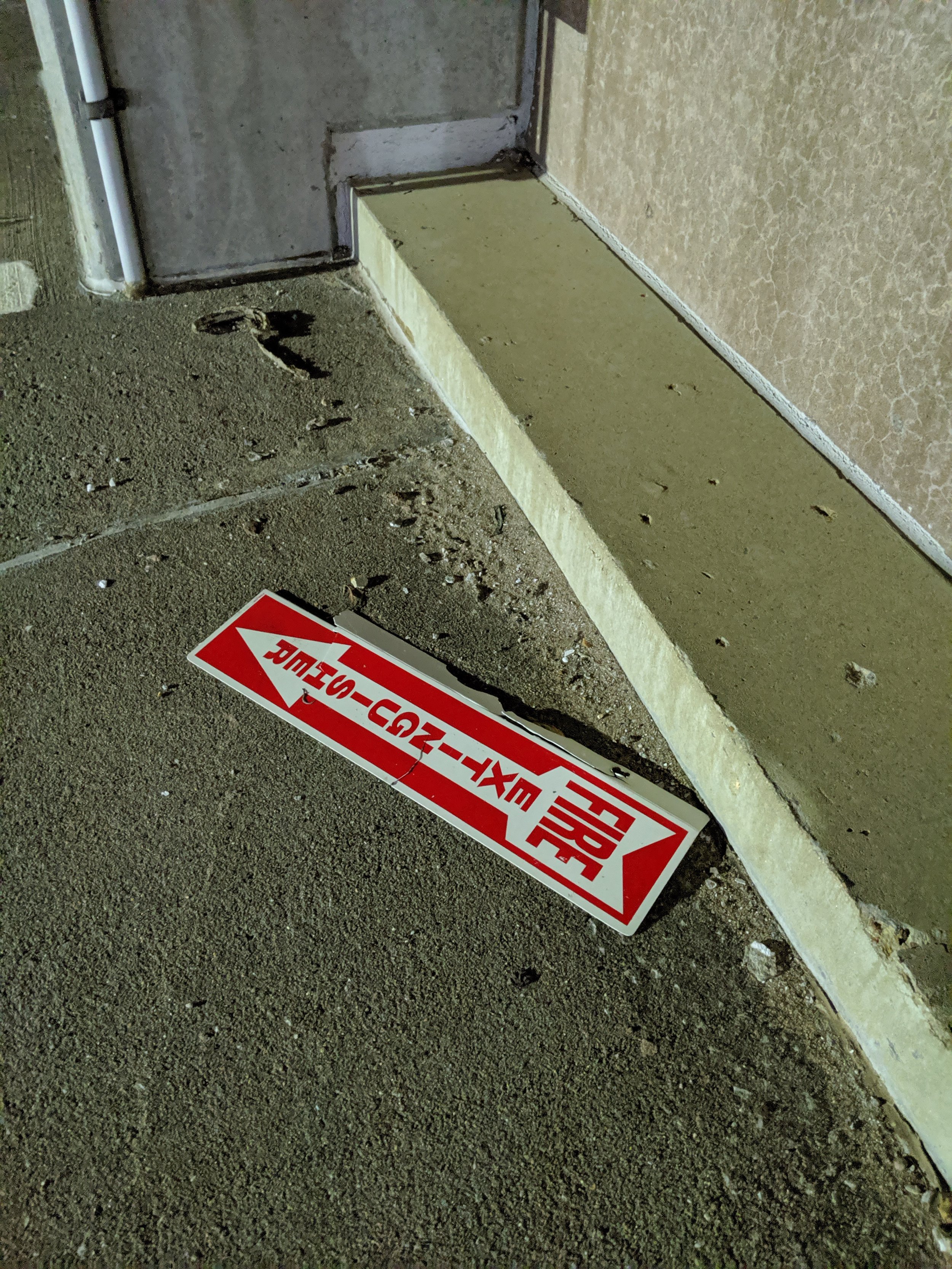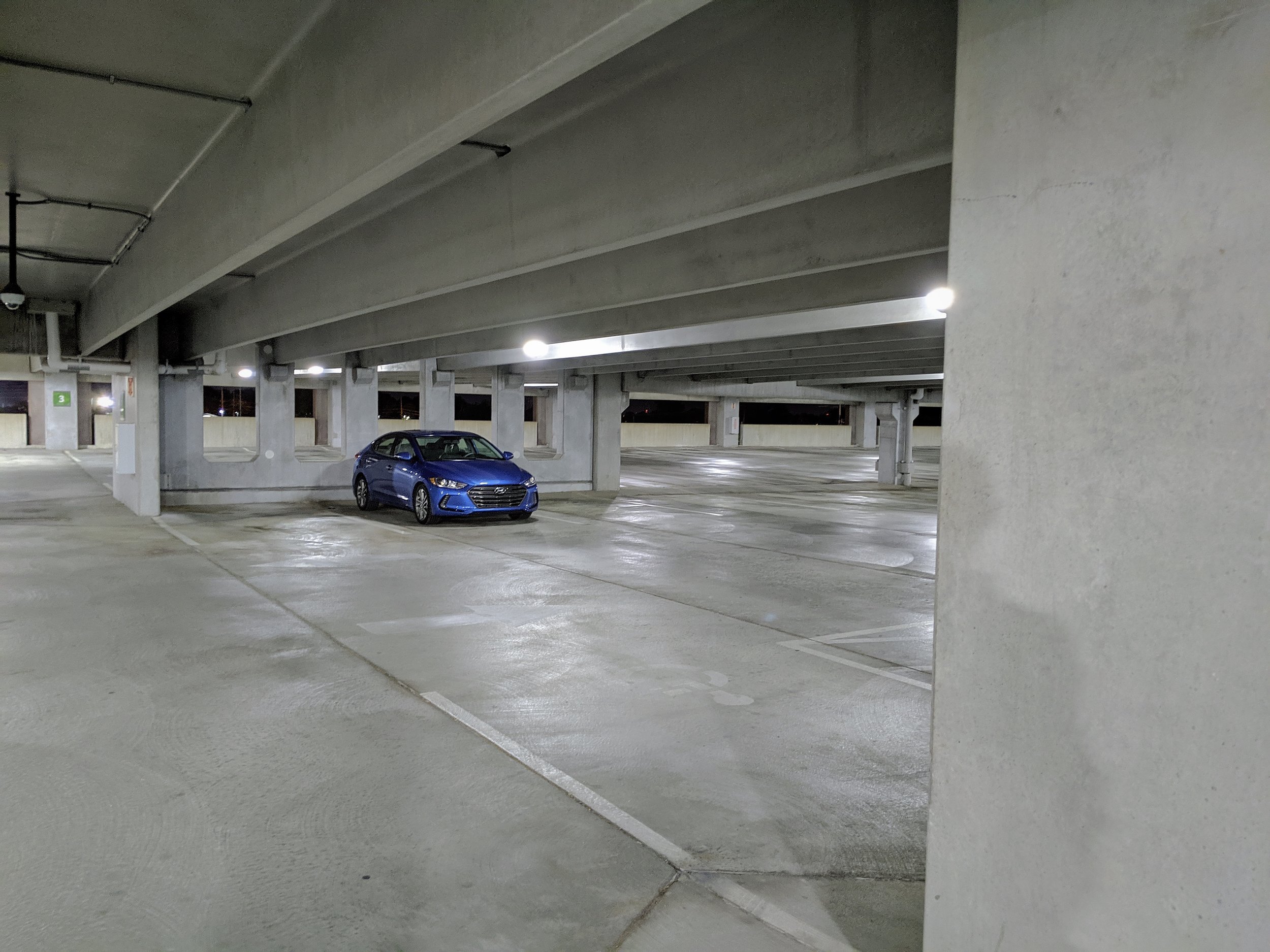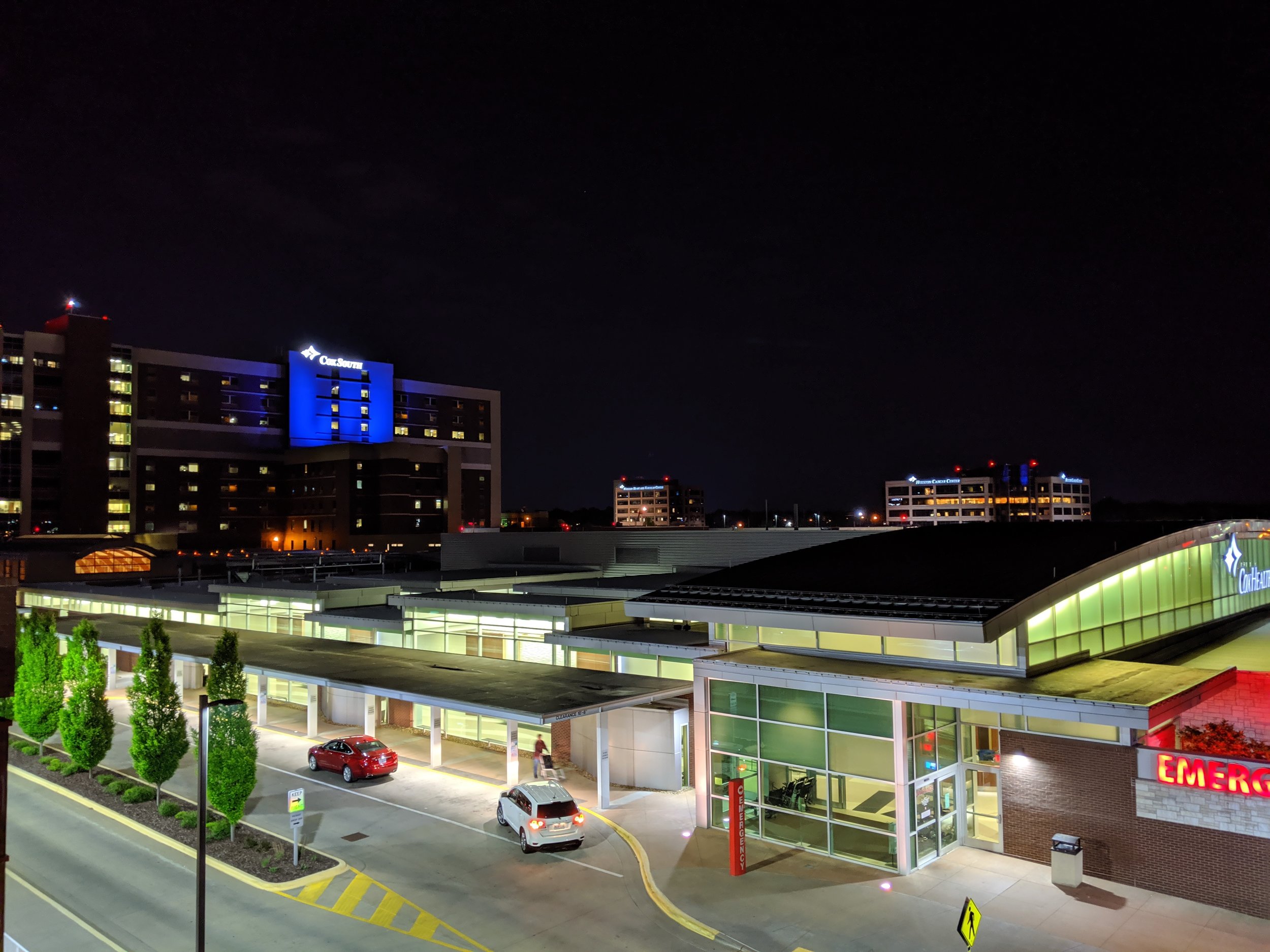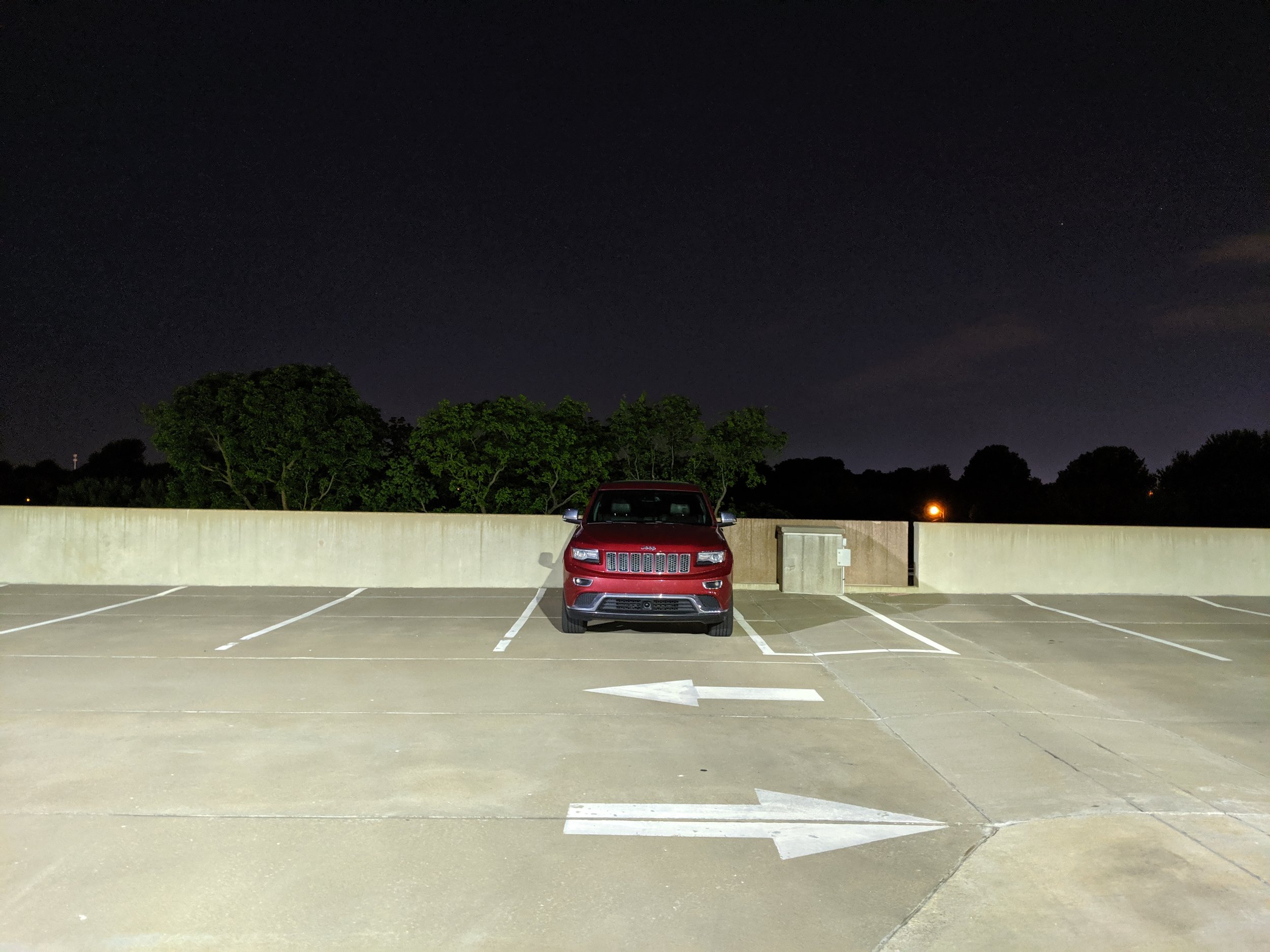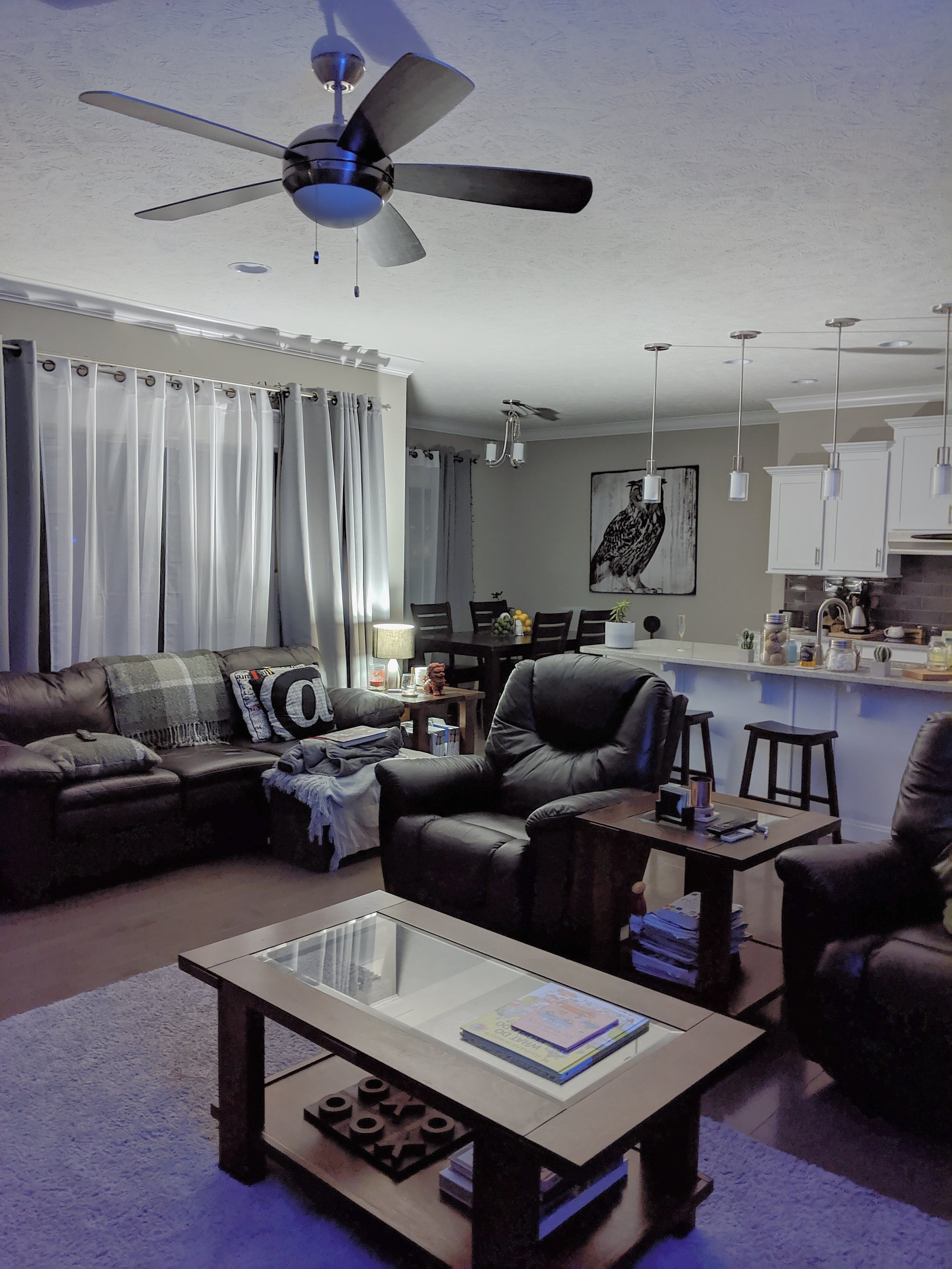For each of the past two years, I have taken a two-week summer vacation. Both times, it consisted of me driving all the way from Arizona back to the Midwest, with stops on the way for friends and family. It was definitely a lot of fun, and something I really looked forward to (other than a few weeks off from work). But ever since last summer, I knew I wanted to do something different for 2015. And naturally, it would involve driving. Driving is the backbone of the trip — I travel a lot on my three-day weekends (19 of my 26 weekends off in 2014 were spent somewhere other than home), many of which are by plane if they're out of state.
My first thought for a destination was Alaska. It seems like an amazing place to visit, especially for taking pictures. Plus, it's so vast and sparsely populated, it would be a great place to just take a break. The only problem was, it is a long ways from the lower 48. You have to drive for days after leaving Washington just to make it to the eastern border of Alaska. Because of this, I wound up nixing this idea. It would require about a week to get there and about a week to get home, leaving me only a few days once at my destination in Alaska. As much as I love driving, it would be too driving-focused and not enough seeing the sights.
So the idea simmered in the back of my head. I knew I wanted to do something in that direction, but not nearly as far. That's when Canada started to show up in my thoughts. I'd never been there before — never even been out of the country — so I wouldn't have to go nearly as far as Alaska to discover someplace new. I decided to make sure I got my passport ready in January, and that actually arrived before the end of the month. I was set to go! My choice to go to Canada was solidified during the 22nd series of Top Gear UK (and sadly its last with Clarkson, Hammond, and May — but that's a story for another time), when in episode 6, Clarkson and May "rescued" Hammond from a mountain somewhere in British Columbia. I knew I had to visit and see the same things they did.
Overall, my vacation spans seventeen days starting on May 29, with my time in Canada consisting of nearly a week, crossing into BC about 2 pm PDT June 1 and re-entering the US about 9:30 am PDT June 8. I drove 1566 miles in that period, so I certainly had plenty of miles for my observations. I've crossed through many states on my way there and back, including my first trips into Idaho, Montana, and Wyoming. But this is primarily about my time in Canada.
Canada is just like the United States. Except for all of the ways it's different. Naturally, it's not a huge change. The language is the same, they drive on the same side of the road, they even use dollars (though not the same look or value). I'm not going to pretend I went on some sort of crazy faraway journey where everything is foreign to me. But as I continued my week in British Columbia, I found my list of things that were interesting (to me) growing. As a result, I am going to write about it. Because I don't write nearly enough. Until now.
First and foremost were the sights. British Columbia is beautiful. They are speaking 100% truth on their license plates. You get a little bit of everything. Lots of water, including the ocean, rivers, or one of many massive lakes. Trees for miles. And mountains everywhere. It didn't matter if you were close to sea level just outside of Vancouver or close to the Rockies out east, nearly anywhere you looked there was something to see. Keep in mind I barely saw a fraction of BC — I didn't even go above the lowest quarter of the province (the northern border is over 1000 miles by car from one of my highest reached latitudes). I was able to see some pretty amazing places, and I'm incredibly happy to have had the chance. I stopped in Whistler (home of the 2010 Winter Olympics), went as far east as Golden, on to Kaslo, then to Kelowna, and finally Langley near Vancouver.
The rest of this probably won't be in any order, because there really isn't one I can figure out that makes sense. Other than the view, the main thing you must notice about Canada right away is that they use the metric system. You can argue all day about how the US is behind and needs to get with the program regarding this, but the bottom line is it's weird when it's not something you are accustomed to. So every speed limit is in km/h, every distance is in km or m. You kind of figure it out after a while, but I still have a problem of not knowing what any metric measurements "mean" until I convert them into something I know. 80 km doesn't compute to me other than "that's a ways" until I figure out it's about 50 miles. Distances didn't really matter too much, but speed limits did. Fortunately, my Grand Cherokee has an all-digital customizable display, so I could change it to show km/h instead of mph while I was in Canada. At least I didn't have to strain my eyes to read the tiny km/h markings on most analog gauges. Speaking of speed limits, it was kind of a mixed bag. Sometimes I was thinking, wow, this is a slow limit, and sometimes I was pleasantly surprised with how generous the limit was. Many rural two-lane highways have speed limits of 100 km/h (62 mph), which is pretty good compared to most of the US (except many western states like AZ and NV, where 65 is the norm, and MT, where it is 70!). And most of the freeway was 110 km/h (68 mph) or 120 km/h (74 mph), although there was not much of it. The Trans-Canada highway (1), which I drove a good portion of, actually has very few four-lane sections in BC, especially compared to the rest of the country. According to bchwy1.ca, there are more kilometers of two-lane road on the Trans-Canada highway in BC than in Alberta, Saskatchewan, Manitoba, and Ontario combined.
Usually speed limits bring talk of police, since they are the ones doing the enforcement. Oddly enough, I hardly saw any police (or Royal Canadian Mounted Police, RCMP, as they are known) during my time there. I don't know if it was just a strange coincidence, but I only saw one police officer sitting waiting for speeders (near Revelstoke), and one with someone pulled over (near Kelowna). That was it. In the US you can hardly spend any time on a highway or driving through a rural town without spotting a police car. They're everywhere. Again, hard to draw any conclusions, but I would have expected far more sightings during the miles I put in there.
When I entered Canada and was driving on Hwy 99 on its path through Vancouver on the way to Whistler, I noticed on the main road I was driving there were green lights that were flashing. It was kind of weird to look way down the street, and see some lights solid green and some flashing green. It was a busy time of day with lots of traffic, so I was focusing on driving, but I still couldn't figure it out. I thought maybe it was something cool like it told you when the light was getting ready to go yellow and red, and left town and didn't really think about it again. Several days later in Vernon, I found myself sitting at an intersection with a stop sign. But the major road I was trying to cross had a stoplight. This seemed so odd — there was no alternating red and green depending on which road you were on. As I was deciding when (or if) I could cross, I noticed the main road had a flashing green. Periodically, it would turn red, giving the cross traffic a clear shot across. It was still disconcerting, since as you're sitting at the stop sign, you don't know definitively if your cross traffic has green or red. But the good news was, I found out what the flashing green meant. This is not to be confused with a flashing green arrow, which usually is right at the beginning of a traffic cycle, and flashes very quickly to give you a sense of urgency in completing your left turn before oncoming traffic hits you.
While I'm on roads, I'll talk about ferries. There are apparently a lot of them in BC. Naturally they exist to get you to Vancouver Island and the provincial capital, Victoria (I didn't go there). But there are also many inland ferries, for places where their highways need to cross a lake or a river and they decided a bridge or another route just wouldn't do. I got to take a ferry while driving on BC Hwy 23 S about 50 km south of Revelstoke. It crossed Upper Arrow Lake, and was a roughly 20 minute ride. I fortunately arrived just in time, because it leaves the west side on the hour and the east side on the half hour. So I would have had to wait nearly an hour to cross if I had been just ten minutes later than I was. It was cool and different, but I wonder at what point the cost of operating one of these ferries (including people on board and those directing traffic on each end) for 18 hours a day every day surpasses the cost of a bridge or different road path.
I also noticed several stickers on people's cars. First was a red "L" sticker on the back. I had a feeling this was a "learner" sticker, meaning the person driving was under the direction of an instructor or parent. I had heard of this in the UK, so was familiar with the concept. But later I saw a green "N" on several vehicles. The drivers of these cars seemed young, but it was hard to tell for sure. After researching it, it seems this is an additional part of BC's graduated drivers licensing system, and all newly licensed drivers must have this on their car until they pass an additional driving test to get their full license. Simple enough, but I read some interesting stories about these magnetic stickers getting "nicked" and placed on police cars or elderly people's cars, and even a conspiracy that young girls in rural areas would be stalked by "creepers" who would target them based on the "N" on their car. Some parents were even willing to state they would not allow their daughter to put the legally required sticker on their car and would risk the C$109 fine.
Speaking of money, I will talk about payments, one of the things that made my time in Canada unbelievably easy. Since Canada is light years ahead of the United States, which still mainly uses magnetic stripe cards, pretty much every merchant in Canada was hooked up with modern technology for allowing people to pay. In Canada, cards either have an embedded chip and a pin that goes with it, and/or near field communication (NFC) for tap-to-pay. This means every card reader is able to read chipped cards, and almost 100% of them work with NFC. This means... I was able to use Apple Pay on almost every single transaction! This was amazing, especially considering most of the merchants I go to day-to-day in the US don't accept it, and many have deliberately disabled their already-working terminals (I'm looking at you, CVS). Really, I only use it primarily at McDonald's and Panera in the US. But in Canada, I could use it everywhere. And since Canadian banks don't support Apple Pay yet (it's currently US-only, with the UK just announced at WWDC this past week), none of the cashiers had seen anyone use an Apple Watch to pay for anything (admittedly, it's the same in the US still). Needless to say, there were a lot of blown minds and "whaaaattt?" and "whoa!" being said. I used my watch at the gas pump. Inside the gas station. At McDonald's. At A&W. At the pub. At the drugstore. Basically anywhere someone wanted my money, I could hold up my wrist. No worrying about if a store was a "partner" or anything stupid like that. But even when I didn't use my watch for Apple Pay, things were a lot better than the US. The biggest change was at restaurants, notably the sit-down variety. In the US, you are given your bill, then the waiter will take your card and run away to complete the transaction, then you get to add the tip after the fact. In this process, you get to hope they are a good person and aren't writing your card number and security code down to buy stuff online, and also hope they input your tip correctly after you've left. Not so in Canada. The waiter doesn't so much as touch your card. They bring a little wireless device for you to put your card into (this was where I more commonly used my one chipped credit card), then you verify the amount and put in the tip. If you like tipping by percent, it will even calculate it for you. Then you verify the final amount, and you're done. No one had your card in their hand other than you. It was pretty cool. But naturally, I had more fun with the using Apple Pay part of things. So much that I had a problem. When I got into Canada, I changed out US$100 into Canadian cash (about C$117), expecting there would be some rural places where it would be necessary to pay in cash, or to pay for parking, or something. Nope. I pretty much had to come up with ways to spend the cash at the end of the trip, including a C$75 stop at a Canadian drugstore the morning I left. Side note, their money does look a bit cooler than that in the US. More colorful, and with interesting clear patches.
I guess which brings me to pharmacy. Of course, as a pharmacist, I am going to be slightly more excited about this stuff than the average person. To be honest, though, I probably wouldn't have even given it much of a thought if it wasn't for all of the Canadian snowbirds I get in Arizona asking for random prescription stuff. And I always have to tell them, sorry, you have to go see your doctor for that. As my trip neared, I kept on thinking, how much of this stuff is really over-the-counter (OTC) in Canada? It was actually one of my first stops in the country. I went to London Drugs in Squamish on my way to Whistler, and spent the better part of a half hour just browsing the aisles and taking pictures. Surely enough, there were plenty of US prescription items just sitting out there on the shelf. Antibiotic eye drops and ear drops. Methocarbamol (a muscle relaxant, brand name Robaxin). Voltaren gel (a topical anti-inflammatory, similar to what is in ibuprofen). Even fluconazole 150 mg, a single-dose treatment for most vaginal fungal infections. Desloratadine (an antihistamine, brand name Clarinex in the US). Overall, I probably spent over C$100 on these drugs just because I could. The most annoying thing was that although everything in Canada has to also be labeled in French (thanks, Quebec), there is no law that the active ingredients have to be listed on the front of the packaging. It made figuring out exactly what was in some of these drugs harder than it should have been. The best news is I now know whether my Canadian friends are lying or not when they say "well, we can get this without a prescription back home." I can't wait until winter.
I didn't do anything too outside of the box with regard to food while I was in Canada (surprising, I know). But there were some familiar options, which was great. The first day, not only did I drive past The Keg in downtown Vancouver, but I also had one across the square from my resort in Whistler. The Keg is one of my favorite steak places in the Phoenix metro (I've celebrated many birthdays and other occasions there), and I've always known they were more established in Canada, but it didn't even cross my mind until I saw them. It was a little awkward eating there alone, but nice to have a good, familiar meal. Speaking of familiar, the next day, I popped into this place called boomBURGER for a mid-afternoon meal while I was walking around in Whistler. I figured I couldn't go wrong with a burger place. Once inside, things seemed a little too familiar. I was basically in a Five Guys knockoff. Everything was almost the same. Boxes of potatoes sitting out. The little menu by where you order, complete with matching verbiage to the Five Guys version. Little cups of fries with extra thrown in the brown paper bag. Regular meant two patties and "little" meant one. The only differences I noticed where a different type of cheese, Pepsi instead of Coke, and a few extra Canadian things on the menu (e.g., poutine). Very surreal. I had to do a search to see if it was in any way sanctioned by Five Guys. I found nothing, and since I see there are some Five Guys in Canada (mainly out east), I doubt it is. Pubs are all over the place in BC. It seems like every hotel has its own pub, and there's probably one down the street, too. At my place in Whistler, I went to the Dubh Linn Gate Irish Pub, which was good. I also went to the one in my hotel in the small town of Kaslo, where I enjoyed some excellent fish and chips. Otherwise, I was able to enjoy some mainstays like McDonald's and Fatburger. There was something surprising, though — A&Ws were also everywhere. I didn't actually count, but I wouldn't be surprised if there were actually more on my route than there were McDonald's. It was fun to stop in there, I don't get to go there much anymore since I only know of one in the western Phoenix suburbs, and some in California. That's it for close to me. I also was able to have some Fruitopia Strawberry Passion Awareness, a drink I haven't had in maybe fifteen years. I don't think they sell this in the US anymore, and if they do, it's under the Minute Maid label now.
One thing that isn't different in Canada is their love for Shania Twain. They love her just as much as we do in the US, and maybe even more since she actually is from Canada. Either way, I was lucky enough to be able to attend her concert at Rogers Arena in Vancouver, her second stop on her farewell Rock This Country Tour, and her first stop in Canada. The arena was packed, and the attendees were loud. Shania's performance was amazing, even better than I recalled from when I saw her in Las Vegas in late 2012. I'm excited to see her again in the US later this year. Then I guess I can truly make a comparison.
The last thing I have relates to Top Gear. As it was one of the things that gave the trip some purpose, it was exciting to see some of the same things they see. I did some research and found out online the location where Hammond was dropped (called Wolf Mountain on the show, Reco Mountain in real life) was between New Denver and Kaslo, BC, in a relatively remote area. There's not much on that 30 mile drive, but it is absolutely beautiful. I think I got one of my best pictures no more than a mile from where Clarkson and May stayed the night. I would have really liked to stay in the same lodge where they did, but I had to settle for just driving back though some mud and getting a picture of it. The company that owns it, Retallack, specializes in extreme sports, including hardcore mountain biking in the summer and snowmobiling in the winter. Alas, the only way to stay there is to be in one of their programs, all of which were multi-day and way beyond my skill level. In a way, it was good, as it allowed me to search nearby for accommodation, where I found Kaslo. There, I stayed at the Kaslo Hotel, which sits right off Kootenay Lake the downtown portion of this small town. I had a great view, great food, and stayed in a historic hotel in a building that actually was an internment camp for Japanese-Canadians during WWII. Interesting to say the least. On my way back to Vancouver, I also stopped at the Hope Drive-In and Restaurant in Hope for some good breakfast, one of the few places they showed on screen as a place they obviously stopped.
Overall, I had an amazing week in British Columbia, Canada. Lots of new things, lots of familiar things. It was the same. But it was different. There is so much left to explore. I already want to go back.
